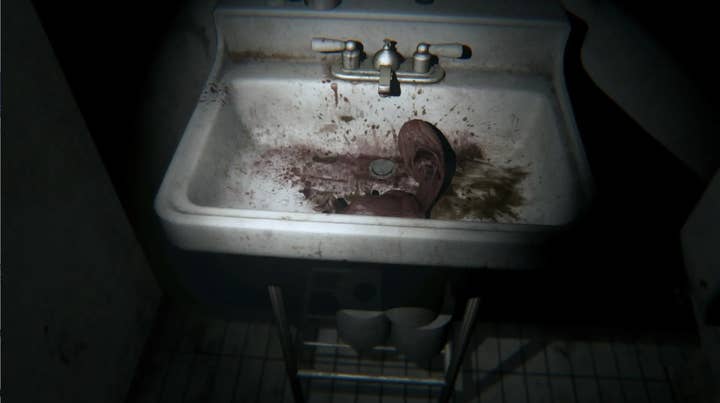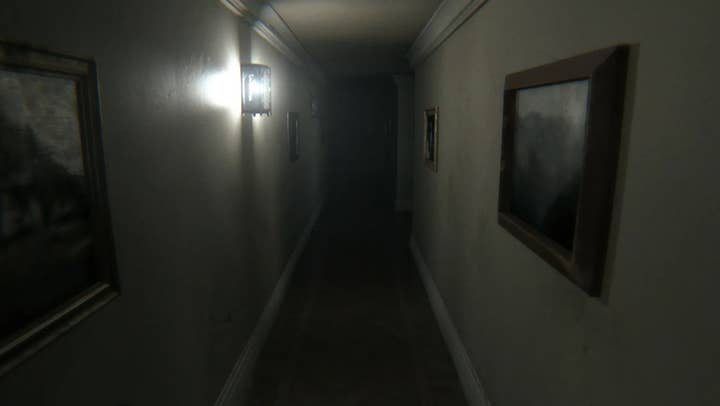P.T. draws maximum fear from minimal scope | Why I Love
Stray Souls developer Pete Wicher shares how the doomed Silent Hills demo got him into making games
Why I Love is a series of guest editorials on GamesIndustry.biz intended to showcase the ways in which game developers appreciate each other's work. This entry was contributed by Pete Wicher, audio director and lead writer at Jukai Studio. Jukai's new game Stray Souls launched this week on PC, PS5 and Xbox Series X|S.
Nine years ago, Sony unceremoniously launched a mysterious horror game on the PlayStation Store. Enigmatically titled P.T. It launched with little fanfare as a surprise "shadow drop" during a Sony press conference.
P.T. changed my life forever, drawing me into the wild world of game development
When the first person completed the game on stream a mere few hours after it launched, P.T. immediately went viral when the end credits revealed its true purpose: the whole thing was a promotion to announce a new Silent Hill game! To this day it remains one of the most ambitious and original ways to announce a game: through the use of another game! While Silent Hills was tragically canceled, P.T. remained ingrained in the public consciousness.
Though not envisioned as a standalone title on its own, it went on to arguably become one of the most inspirational pieces of interactive horror media for the following decade. P.T. will always hold a very special place in my heart because it changed my life forever, drawing me into the wild world of game development.
But first, a little background into what P.T. even is for the uninitiated. The game's setup was deceptively simple: viewed from a first-person perspective, you entered an early 90's suburban house's hallway where an old digital clock glowed at 11:59 pm for a midnight that will never come. Perpetually frozen in time, this corridor set the stage for an eerie horror adventure unlike any other.
The game, as it turned out, was one big escape room set around an endlessly repeating hallway. The "exit" took you right back to the start, as you looped around the same hallway in perpetuity. It's an utterly chilling setup that could only be done in video game form, and to this day P.T. remains among the most effective haunted-house-simulators ever made.
P.T. provoked a lingering dread long after turning off the console
As a lifelong fan of horror media I had a rather high tolerance for video game scares, so when a friend invited me over to try out this "cool new horror game," I was a bit skeptical because I'd given up on the idea that games could still scare me. Yet P.T. provoked a lingering dread long after turning off the console and heading back home from my buddy's house. There are so many aspects from my experience that I could talk about at length, but for brevity's sake, I'll stick to the core elements.
On a pure visual level, P.T. was the most realistic thing I'd seen running on a game console. Every element, from the single spider in its web to the scattered beer bottles and pill-boxes, oozed with attention to detail. Although the game was initially presented as an "indie game" by a fictitious small studio, it was clear from the very start that a massive amount of love had been poured into the art design to ensure the game looked incredible.
The hallway itself felt equal parts real and otherworldly. The human detritus scattered across the tops of furniture was so visually appealing that it was hard to not stop and stare at it. Later in the game, when the hallway shifted into full nightmare-mode – adorned with reams of moving paintings of rolling eyeballs – it retained its realism on a technical level, making it even more unsettling.

Equally important to the top-notch visuals was P.T.'s sound design. The creaky chandelier groaning back and forth coupled with the guttural croaks of a just-out-of-sight spirit breathing in your ear made for a bone-chilling auditory nightmare. Let's not forget the blood-curdling wails of the crying baby, or the strange Swedish radio transmission that warned us that "They were watching." All these elements added so much to the immersion to the overall experience.
Individual elements of P.T.'s audio landscape were inherently simple, but each one was handled with care in order to blend with the soundscape perfectly. As a life-long "sound guy," I was dumbstruck by how the audio design and minimalist musical score worked together to create a nightmare symphony.
All these gorgeous visuals and eerie sounds were the foundation upon which P.T.'s unconventional narrative was told. Far from being a straightforward experience, it's never been fully clear exactly what P.T.'s plot even is. The story spilled out of its simple suburban setting and took on a life of its own as a descent into madness. Every new development – from torn pieces of a photograph scattered around, to strange monologues delivered while peering through a peephole – seemed to enhance the "dream logic" quality of the experience and asked a myriad of questions without giving straight answers. P.T. was essentially a masterclass in environmental storytelling that bent the rules on how a narrative was delivered to the player.
At the center of this narrative was its marquee creation: the ghost of Lisa. Her broken breath and raspy cries transcended the realm of the haunted hallway and leapt off the screen in order to create a real sense of being watched, which increased the tension and dread when traversing a fresh loop through this infinitely repeating corridor. Mere minutes after entering the nightmare, Lisa's presence is revealed in one of the most iconic scenes in horror: she's just standing there, blocking your path, waiting for you to have the guts to approach her. And when you do, the lights go out for a second, and when they return, she's gone! The crowd of skittering cockroaches Lisa leaves behind seem to echo a warning that maybe you should also run away.
The question of who was really the monster kept me coming back, loop after loop
Lisa was depicted as a twist on the classic "lady in white" trope and she operated as an effective pseudo-villain. It was initially very unclear how to avoid her, so her seemingly random appearances could provide a sudden heart attack if you weren't careful. I was absolutely intrigued by Lisa's story and the implications of what the connection was between the player character and this horrifying apparition. The question of who was really the monster kept me coming back, loop after loop.
In order to put the player in the driver's seat of this unhinged narrative, P.T. employed unconventional mechanics that were executed with simplicity and grace. Aside from using the dual analogue sticks to move and look around, the game only had one other form of interaction: zooming in on what you're looking at. It became clear that environmental interactions are triggered by zooming in and focusing on the right details. You really needed to closely inspect everything to find your way out. This idea of making the player focus on every single detail of the environment was a great way to limit the player's view, thus increasing the fear factor, while also being a substitute for the classic "press ‘A' to interact" input style.

It was all so esoteric, yet packaged to be extraordinarily simple on the surface. Basically, anyone could pick up and play P.T. due to its simple, intuitive control scheme, and those who did were rewarded with an experience that pushed the boundaries of what a video game was.
The most unconventional mechanic was the use of voice recognition to unlock the final puzzle. If a player spoke the correct word at the right time, the exit would unlock, and they would be treated to a cinematic teaser for Silent Hills. These days, software that responds to someone's voice is commonplace, but at the time it was a novel approach to immersion. I was personally blown away by all the subversive and unusual things P.T. did to engage the player and provide them with alternative methods of interaction. It elevated the experience from a simple "indie game" to a refined delivery system for fear. In fact, I'd say it was more terrifying than any slice of horror media I'd ever engaged with!
Seeing such a small sliver of media produce so much content was astonishing, and often highly entertaining
Beyond being a truly terrifying single-player experience, one of my favorite aspects of P.T. was the way the game demanded cooperation from people across the globe to solve it. Hints were obtuse, and sometimes clues in different languages would "glitch" across the screen upon discovering a torn piece of a photograph. This was such a unique way of tying the experience to real-world knowledge of other languages, while also serving as another layer of mystery within the endlessly looping hallway.
It wasn't only the puzzles that had players around the world sharing info and theories, but the lore as well, with the community around the game discussing questions for years to come. Interest in the subject remained high as one internet sleuth after another offered their theories as to what it all meant. Seeing such a small sliver of media produce so much content was astonishing, and often highly entertaining!
It was here among the community that I encountered amazing folks who had all been inspired to start their path into the world of game development. Every individual had a story to tell and P.T. had been the motivational catalyst for all of them.
Publicly, the discourse around P.T., as well as the eventual cancellation of Silent Hills and subsequent removal of P.T. from the PlayStation storefront, was rehashed by countless publications over the past decade. But what was the real, lasting impact of the game? Well, for a time it felt like every indie studio and solo developer in the world was trying to create their own version of P.T.
Countless first-person horror games began development, all with minimalistic mechanics and an emphasis on jump scares. A new realization rippled through the indie-horror scene once it became apparent that telling stories through interactive media had become widely achievable.

A few of these P.T.-inspired games managed to come close to capturing its magic, such as Resident Evil 7, Layers of Fear, Visage, and Madison, but the vast majority felt severely unpolished, and in some cases just downright derivative. Many resorted to being unambitious "walking simulators" that didn't have much gameplay besides "move forward until you trigger the next spooky moment."
It's hard to point at one aspect of P.T. and say, "Yes, this was the spark that started my journey." Its impact was a cumulative experience. Every aspect – from the mechanics to the visuals, sound and narrative – lived rent-free in my head from the moment I first played the game. When I first experienced it, I was still unsure of my career direction, but once I'd played P.T., my path in life changed gears towards game development.
Every aspect – from the mechanics to the visuals, sound and narrative – lived rent-free in my head from the moment I first played the game
Much like the famous Konami code, P.T. pushed all the right buttons within my mind. By its mere existence, P.T. unlocked a purpose I'd never considered before. Suddenly, I was telling myself, "You could help make a game like this!" I realized that I might be able to contribute to a project like P.T. and maybe even help shape a story that would linger in people's minds the way P.T. had burrowed into mine.
P.T. became something greater than a mere promotional piece for the now defunct Silent Hills. It became a lightning bolt of inspiration to myself and others. Its small scale and lasting impact motivated people to create, and for me personally, it changed my life and gave me a sense of purpose and direction.
Up until the point, writing and producing music had always been a hobby to me, but after P.T. I knew that I wanted to be in the thick of it, developing games and using that medium to create memorable, spooky experiences. P.T. was the catalyst that led me to writing music for several indie horror games like Visage, and ultimately brought me to co-creating Stray Souls, where I've worked on not just the audio, but writing the dialogue, narrative and design.
It's no exaggeration to say that P.T., a seemingly small game set entirely in a tiny corridor, forever altered my life by demonstrating just how memorable and inventive even the most modestly scaled horror game can be. It offered a window into the medium's potential, and one I'll spend the remainder of my days on Earth delving endlessly into.
Developers interested in contributing their own Why I Love column are encouraged to reach out to us at news@gamesindustry.biz.





.jpg?width=291&height=164&fit=crop&quality=80&format=jpg&auto=webp)


